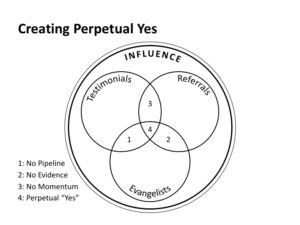For the Win (Mark’s Persuasion Priority Action Plan: The Conclusion)
We’re now ready for the final step in my seven-step persuasion priority action plan. I wrote about the previous six steps here and here.
At this point, you have thoroughly evaluated your risk and reward, as well as determined whether you’d like to move forward with you persuasion priority. Remember, your persuasion priority is this: Who is the one person you want to say yes to what?
You’ve also articulated your request, and identified not only your self-interest but the enlightened self-interest of others.
You’ve crafted your case, crunched the numbers, created compelling language, crafted superb stories, and anticipated resistance and your response to that resistance.
You’ve identified key players in your request, considered their personalities and preferences, and mapped your persuasion terrain.
Now, you’re ready to launch a plan that will take you to your objective. At a high level, your action plan may look like this:
- Meet with financial analyst to see if numbers make sense.
- Engage your target on the topic; ask for input.
- Brainstorm options with him and others.
- Run the numbers and various scenarios.
- Form and frame options to get result.
- Acknowledge potential challenges and ask for your target’s opinion.
- Formalize the decision and create perpetual yes.
Create as many action steps as necessary, but don’t make things overly complicated. You probably don’t need 27 action steps, but two might be too few. You can then adjust accordingly as your persuasion campaign develops.
You my consider giving the what, when, why and how approach a shot — just to ensure you think through your action steps accordingly.
Your Course of Action
What: Approach financial analyst Corey Williamson and ask for ROI estimate input.
When: COB next Friday.
Why: We have a great relationship, so he’ll be honest with me when evaluating pros and cons. Presenting a solid financial case will show I’m serious. Plus, if this idea won’t provide great ROI for the company, I shouldn’t move forward.
How: I know Corey is at his best in the morning. He’s also a text message guy who hates surprises and loves details. I’ll send a text, set up a morning meeting and bring him all the details for his perusal.
Try scripting out your first five action steps in this format and see what develops.
Can’t I Just Pitch It?
When I present the art of persuasion this manner, some people ask me, “Do I really need to do all this? Can’t I just go in pitch it?”
Sure, you can. It all depends on how big your “ask” is and how important the result is to you and your organization. You certainly wouldn’t unleash this sort of horsepower when trying to persuade someone to go to a seafood restaurant for lunch. But if you’re vying for that coveted assignment, looking to add significant numbers to your staff or pitching your board of directors on a new strategic initiative, you better bring it.
The rule of thumb is that planning pays off in a 5:1 ratio: Every hour you spend planning pays off by saving you roughly five hours of misdirected effort.
What are you willing to do to hear yes?
Photo by bruce mars on Unsplash



